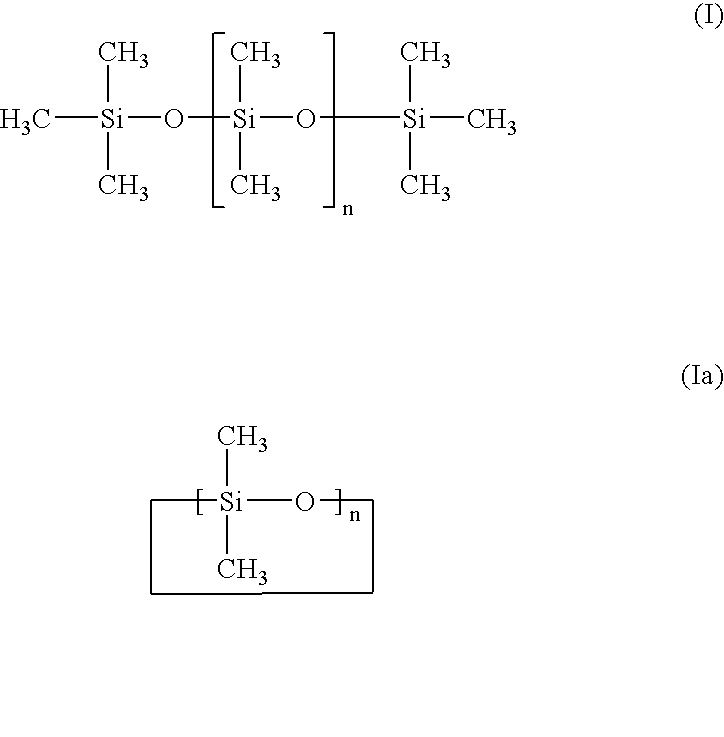Process for producing detachable dirt- and water-repellent surface coatings
a technology of surface coating and dirt, which is applied in the direction of other chemical processes, sustainable waste treatment, solid waste management, etc., can solve the problems of affecting the finishing process of textile surfaces, affecting the self-cleaning effect of textile surfaces,
- Summary
- Abstract
- Description
- Claims
- Application Information
AI Technical Summary
Benefits of technology
Problems solved by technology
Method used
Image
Examples
example 2
[0058]0.5 g of siloxane wax (Tegopren® 6814, hereinafter TP 6814) with a molar mass of 13000 g / mol and a recrystallization point of 2 / g, (Aerosil® R 812 S) was dispersed in this solution, with vigorous stirring.
[0059]On white glazed tiles, this suspension gave a contact angle of 130° and a gloss value of 15.0 at 85°.
example 3
[0060]0.5 g of siloxane wax (Tegopren®6814) with a molar mass of 13000 g / mol and a recrystallization point of 2 / g, (Aerosil® R 8200, hereinafter R 8200) was dispersed in this solution, with vigorous stirring.
[0061]On white glazed tiles, this suspension gave a contact angle of 105° and a gloss value of 56.1 at 60°.
example 4
[0062]0.5 g of siloxane wax (Tegopren® 6814) with a molar mass of 13000 g / mol and a recrystallization point of 2 / g, (Aerosil® R 812 S) was dispersed in this solution, with vigorous stirring.
[0063]On white glazed tiles, this suspension gave a contact angle of 133° and a gloss value of 11.7 at 85°.
PUM
| Property | Measurement | Unit |
|---|---|---|
| particle diameter | aaaaa | aaaaa |
| surface energy | aaaaa | aaaaa |
| height | aaaaa | aaaaa |
Abstract
Description
Claims
Application Information
 Login to View More
Login to View More - R&D
- Intellectual Property
- Life Sciences
- Materials
- Tech Scout
- Unparalleled Data Quality
- Higher Quality Content
- 60% Fewer Hallucinations
Browse by: Latest US Patents, China's latest patents, Technical Efficacy Thesaurus, Application Domain, Technology Topic, Popular Technical Reports.
© 2025 PatSnap. All rights reserved.Legal|Privacy policy|Modern Slavery Act Transparency Statement|Sitemap|About US| Contact US: help@patsnap.com



